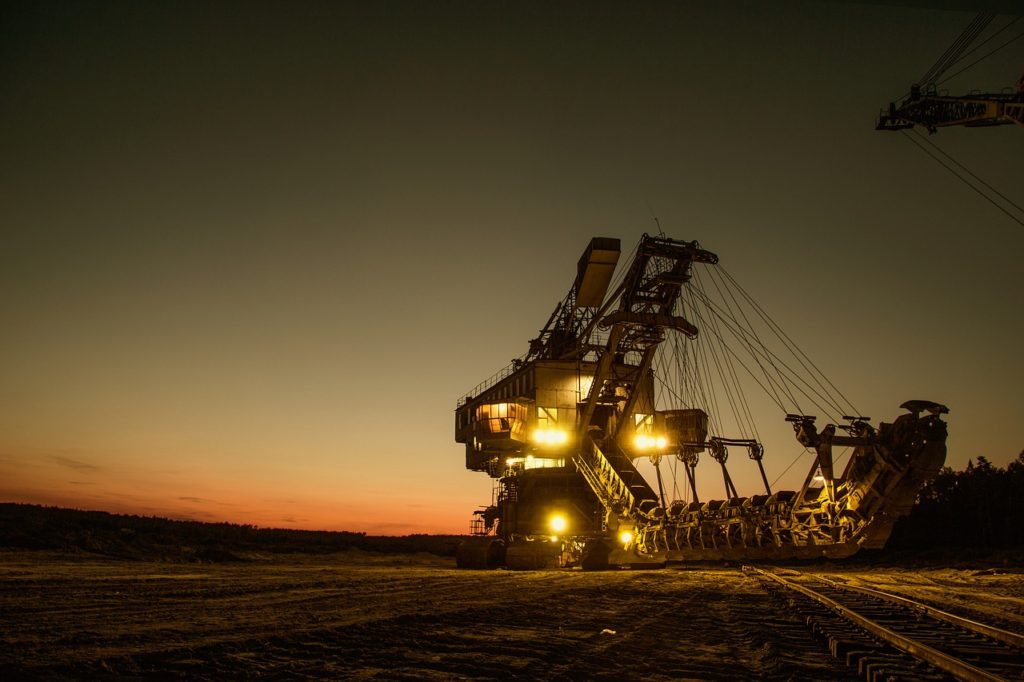Chemical Storage Disaster incidents are a rare event in the chemical industry. However, negligence and improper handling of chemicals may result in devastating consequences. There are various potentially dangerous materials and processes employed in the chemical sector.Aside from the immediate implications surrounding a major incident, such as loss of life, a threat to the environment, or the destruction of plants and surrounding buildings, the damage to the industry’s reputation is almost irrevocable.
The safe storage of chemicals is an essential part of a health, environmental, and safety program. The chemical storage facilities must meet minimum standards to satisfy diverse regulations.
Adept chemical storage facilities account for large quantities of hazardous chemicals that are manufactured daily and transported. The most common means of transportation are ships, in addition to road and rail routes. The cargoes are unloaded and kept in marshaling yards or warehouses temporarily. Most of the accidents occur in these port areas where enormous quantities of chemicals are stored. The accidents can have extensive consequences for both humans and the environment. Around 54.8% of transportation accidents have occurred near seaports in the last 60 years. Also, their proximity to population centers leads to an increased number of fatalities and injuries. Waterfront facilities involved in the marine transfer of chemicals are governed by specific regulations imposing appropriate safety measures. Prediction and consequence assessment of accidents is not easy due to the uncertainty of the amount and nature of chemicals present. However, typical scenarios of possible accidents can be developed by considering the maximum amount of chemicals arriving at a location.
Past explosion incidents
On 4 August 2020, Beirut, the capital of Lebanon witnessed the largest explosion recorded in modern history. A cache of around 2750 metric tons of ammonium nitrate precariously stored ignited and set off a massive blast. The blast destroyed the ancient city and reopened old wounds for a fragile population. The country was already facing an ongoing socio-economic crisis, civil unrest, and the COVID- 19 pandemics. The Beirut blast resulted in more than 200 fatalities, over 7,000 injuries, and 300,000 homeless people. The explosion severely damaged critical health infrastructure and medical supplies.
The blast occurred due to an enormous quantity of ammonium nitrate stored for over six years in a warehouse at the Beirut port. The huge tremor causing the blast was preceded by fire, possibly due to firecrackers. Large quantities of stored ammonium nitrate can lead to a major fire hazard. There are two ways in which stored ammonium nitrate can explode. The first is by an initiation because the storage may encounter an explosive mixture. The second way could be due to a fire in the storage area because of the heat generated as a result of the oxidation process.
The blast put the people of Lebanon in an extremely vulnerable situation. Currently, over 3.5 million people are below the poverty line in the country. They have been living in a situation of mass unemployment and food insecurity. As per the International Rescue Committee, the rates of COVID- 19 infections increased by 220% after the explosion. As per research by Lebanese officials, the total cost of the blast was reported at USD 15 billion. The World Bank Group estimated the infrastructure recovery cost to be around USD 3.8-4.6 billion.
TEXAS 2013
A fire and explosion occurred at the West Fertilizer Company (WFC) on 17 April 2013. WFC is a fertilizer blending, retail, and distribution facility in Texas. The massive violent destruction fatally injured 12 emergency responders and three members of the public. The local hospitals treated more than 260 injured people. The explosion destroyed the WFC complex. As a result of the explosion, around 350 homes were damaged and 142 homes were destroyed beyond repair. The Texas explosion is one of the most destructive explosions ever investigated by the U.S. Chemical Safety and Hazard Investigation Board. Following the explosion, WFC filed for bankruptcy.
The explosion occurred approximately 20 minutes after a fire started at the storage building of WFC. Around 40-60 tons of fertilizer grade ammonium nitrate (FGAN) was stored in the facility, in addition to the chemical not offloaded from a railcar. The overturned FGAN railcar indicated how violent the explosion was. A nearby seismic data recorded an event similar to an earthquake of 2.1 magnitudes on the Richter scale. The explosion created a 3m deep, 23m diameter crater below the main FGAN storage bin.
The storage of fertilizer grade ammonium nitrate is common worldwide. The chemical is stable at ambient temperatures. However, it becomes explosive when exposed to higher temperatures or a shock wave. The presence of 0.2% carbon can also add up to the blast potential.
As per the investigations by CSB, there can be various reasons responsible for the massive explosion. The lack of an automatic sprinkler system is among the main reasons for the blast. Also, WFC had not conducted a full-scale Occupational Safety and Health Administration (OSHA) inspection since 1985. OSHA has made it mandatory for all chemical producers, importers, and distributors to maintain Material Data Safety Sheets (MSDS). This sheet contains detailed information about the nature of the chemicals they are handling. MSDS also explains how a fire or spill can be handled and how injuries can be treated. These sheets should also be referred to to avoid dangerous reactions.
The total insurance-related losses due to the explosion were estimated to be nearly USD 230 million. The West Fertilizer Company was insured for only USD 1 million, which fell far short of the incident’s damage.
The 2013 West Fertilizer Company plant explosion resembles a 1947 event. A ship loaded with ammonium nitrate, docked at the port of Texas City erupted in flames and exploded. Ammonium nitrate was used to produce bombs during World War II and later turned into fertilizer. After a fire, around 2,300 tons of ammonium nitrate detonated. The blast killed nearly 600 people, including 26 firemen. The explosion destroyed 1,000 buildings in the city along with the city’s firefighting equipment. There was another ship at the port carrying ammonium nitrate. This ship caught fire and exploded 16 hours later.
The chemical ammonium nitrate has also caused several other major industrial disasters. A fertilizer processing plant in Texas caught fire in 2009. It led to the evacuation of more than 80,000 nearby residents. A truck containing ammonium nitrate crashed and ignited in Mexico in the year 2007. The blast resulted in 40 casualties and 50 injuries.
CHINA
A series of explosions devastated the port city of Tianjin, China on 12 August 2015. The explosions occurred at a container storage station at the city port. More than 40 types of hazardous chemicals were present at the blast location. These chemicals included sodium nitrate, potassium nitrate, ammonium nitrate, and sodium cyanide. The complex and highly toxic chemicals complicated the explosions to the condition of the injured patients.
The immediate cause of the accident was the spontaneous ignition of dry nitrocellulose stored in a container that overheated. Flames from that initial fire reached the nearby ammonium nitrate fertilizer, which exploded. The explosion could have intensified due to water sprayed on one of the chemicals to control the initial fire. Calcium carbide present at the site reacts with water and forms the highly explosive acetylene compound. As per various chemical experts, the acetylene blast could have detonated the other chemicals for a much larger blast.
The series of explosions killed nearly 173 people and injured more than 700. Multidimensional injuries affecting almost every organ system were observed in these patients. Around 6.7% of the patients were diagnosed with an inhalation injury and 2.7% were diagnosed with chemical poisoning.
KADENA WAREHOUSE
A massive fire broke out at the Kadena Air Base, Japan in June 2020. Around 120 people were affected by exposure to smoke or chlorine gas from the fire. The fire destroyed the hazardous chemical storage building at Kadena Air Base, at a loss of USD 2.6 million. It forced the closure of the flights at the baseline for almost two hours.
The investigation found that the fire at the storage building started due to improperly stored calcium hypochlorite for over 20 months. Over the months, the condition of the plastic packaging and boxed deteriorated. The pallets started falling over, boxes ruptured, and loose granules accumulated on the warehouse floor. Airmen just 11 days before had another incident due to the chemical compound. A bag began to emit gas, causing the building to be evacuated.
Calcium hypochlorite is used as a bleaching powder and has a strong oxidizing potential. The chemical compound can become unstable at high temperatures and humid conditions. The compound is not itself flammable, but the heat it produces can ignite other materials. Calcium hypochlorite can intensify a resulting fire and release toxic chlorine gases. The chemical storage of this compound plays a key role in the process dynamics.
The chemical needs to be stored in a cool, well-ventilated, and dry place. However, the storage building did not meet these standard requirements. Inspections and unscheduled maintenance the prior year showed poor lighting, no fire suppression, and improper storage facility.
Mitigation techniques
Safe chemical handling required regular inspections of chemical storage areas. All storage cabinets and areas should be inspected annually. Any unwanted or expired chemicals must be removed. The inherent hazards of a chemical can be reduced by stringent inventory control. Safe storage begins with an up-to-date inventory of hazardous chemicals that can be used to apprise personnel of the dangers in a laboratory, shop, or work area. An accurate inventory is also necessary if emergency responders are to respond effectively to a fire or chemical release in the area. Typical storage considerations include ignition control, temperature, ventilation, and identification. Proper segregation is essential to prevent incompatible materials from coming in contact. Proper storage information can be obtained from the Material Safety Data Sheet (MSDS), label, or other chemical reference material. To keep facilities safe, it is not possible to rely on government associations to spot problems before they happen. It is up to the safety managers, frontline workers, and plant managers to implement smart tools to keep the factories safe.

